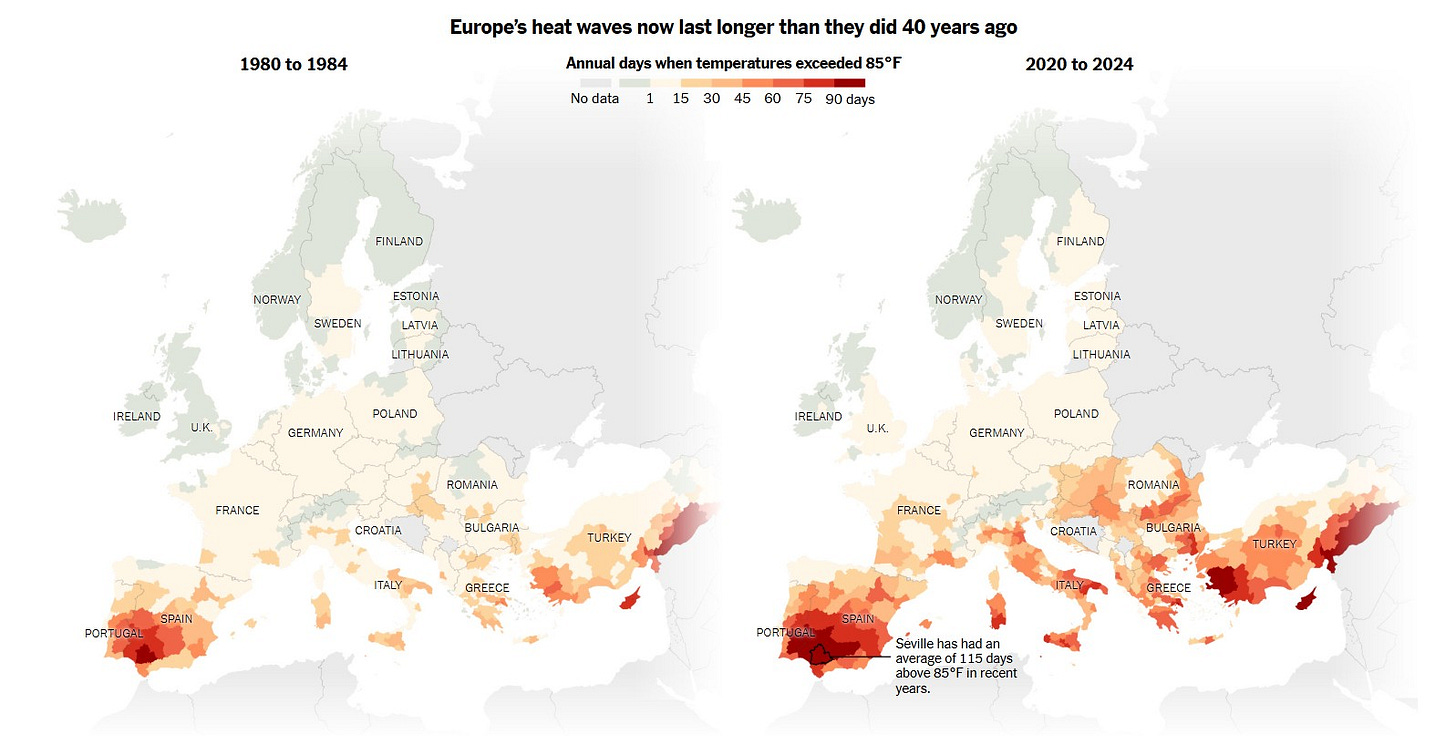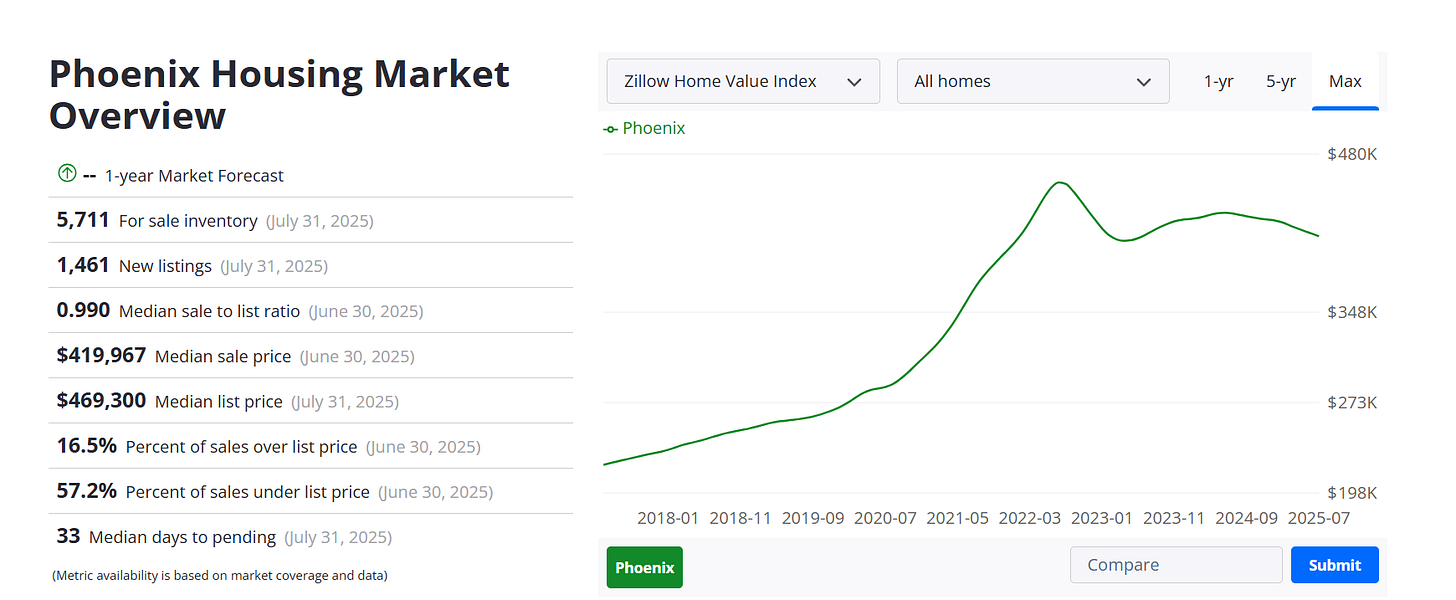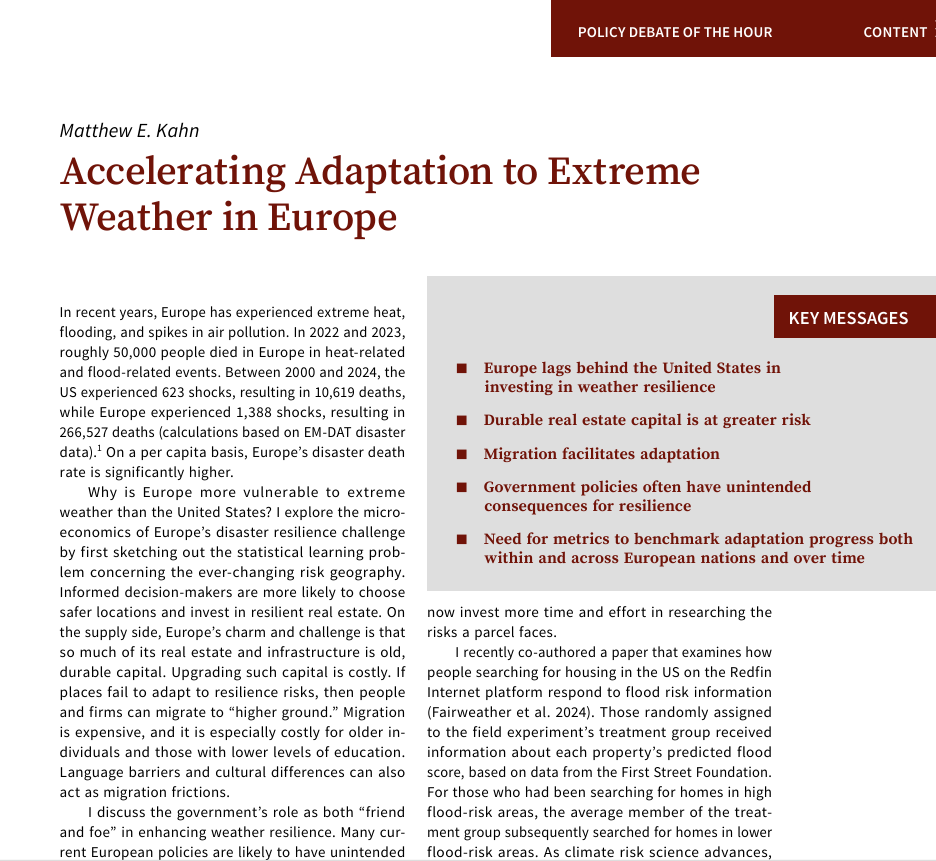Adapting to an Anticipated Challenge
Why is Europe So Slow to Invest in Air Conditioning?
The New York Times has published a great map of Europe that highlights the geography of a warming continent.
You can clearly see how parts of France, Italy, Greece, Turkey and Croatia have become warmer over the last 40 years.
When people and firms are exposed to high heat, this has a series of bad effects in terms of health, quality of life and productivity. The fact that hot American cities such as Las Vegas and Phoenix and Asian cities such as Singapore continue to thrive is the immediate proof that air conditioning plays a fundamental role in adapting to summer heat. In this substack, I will discuss Europe’s slow adaptation to an obvious trend.
First, here is a graph of the Zillow Phoenix Home price index from 2018 until now.
While this is a nominal price index, it highlights that home buyers are paying much more in recent years than in 2018. These investors are making a bet that hot cities have a bright future. In my adapting to climate change research, I have argued that water markets and innovations in protecting real estate in hot places will preserve quality of life in such places, even during nasty summer months. Those who don’t mind spending more time inside from 10am until 5pm each day will be more likely to seek out such areas. They will enjoy warm winters and lower home prices than on the coasts.
Returning to Europe and the Air Conditioning Puzzle
Earlier this year, I published this paper;
I will now discuss each of my “Key Messages” listed in the upper right panel.
#1 and #2 Europe’s economy is shrinking in terms of population and not growing quickly. Europe’s cities are old and feature old buildings and infrastructure. During a time of slow growth, the incentives to build new capital and to update the capital stock are low. Tourists like the “old stuff” but they want it to have modern amenities. So think of a 17th Century church in Italy with great air conditioning and white cheese pizza! Phoenix and Las Vegas are new cities with a much younger capital stock. Durable capital (think of the old New York City JFK airport) slows down adaptation to changing local weather conditions if it is costly in terms of time and $ to update old capital to handle new weather conditions.
If European Cities believe that they will lose firms and footloose people and tourists if they fail to adapt to new weather conditions, then they will have a greater incentive to “raise their game” and make new investments. If Tourist Cities in Italy and Greece think that the Americans will keep visiting during hot Augusts then they are less likely to make these investments. Read my 2010 Climatopolis book to see an expanded discussion about how places compete to attract and retain economic activity and how this competition fuels resilience.
#3 In the United States, people are free to choose to migrate away from decaying places towards vibrant places. Of course, culture and history create reasons to remain in a place where you grew up. In Europe, the continent’s cultural and language differences across countries create even greater migration costs that reduce the likelihood that a French person moves to Germany. Europe would have an easier time adapting to the warming of specific regions if Europeans were more “footloose”. The threat of out-migration provides placed based local elected officials with an incentive to be more proactive in addressing anticipated threats to local quality of life.
Now, some environmentalists say that if Europeans widely adopt air conditioning that this will accelerate climate change. In terms of magnitudes, this claim is false. Roughly 5% of the world’s population lives in Europe (400 million out of 8 billion). Given Europe’s increasingly low carbon grid, an increase in electricity demand will barely increase global GHG emissions. The European guilt for cranking the AC during hot summers should be low!
An irony here is that Europe’s energy policies have played a role in raising regional electricity prices. This makes air conditioning more expensive for poorer people in Europe. This increases their suffering during hot summers. The green decarbonization policy push has raised the price of adapting to summer heat! Not enough research has explore this point. In nations with finite budgets, more $ should be spent on resilience in the face of flooding and summer heat than on subsidizing solar panels for all!





Can you elaborate on the last point? Your claim that "[t]he green decarbonization policy push has raised the price of adapting to summer heat" seems reasonable for regulations/taxes that raise energy prices. But the next part, that "more $ should be spent on resilience in the face of flooding and summer heat than on subsidizing solar panels for all" doesn't logically follow to me--don't the solar subsidies reduce energy prices ceteris paribus, and thus have the additional benefit of easing adaptation for exactly the reasons you describe?